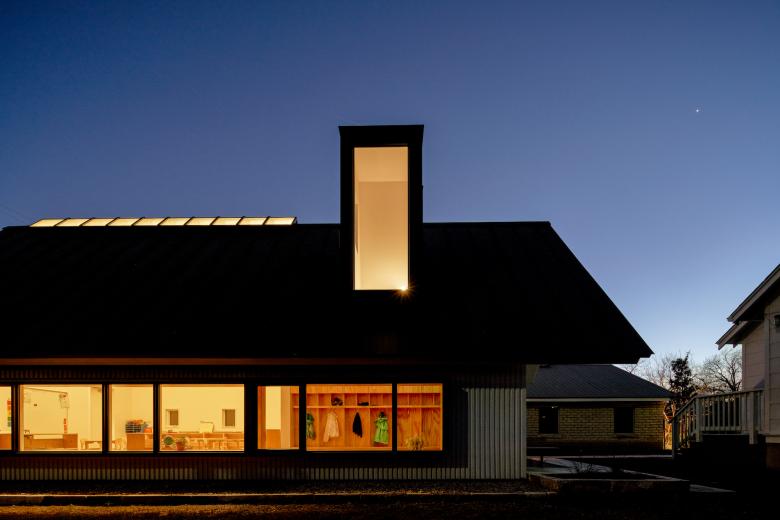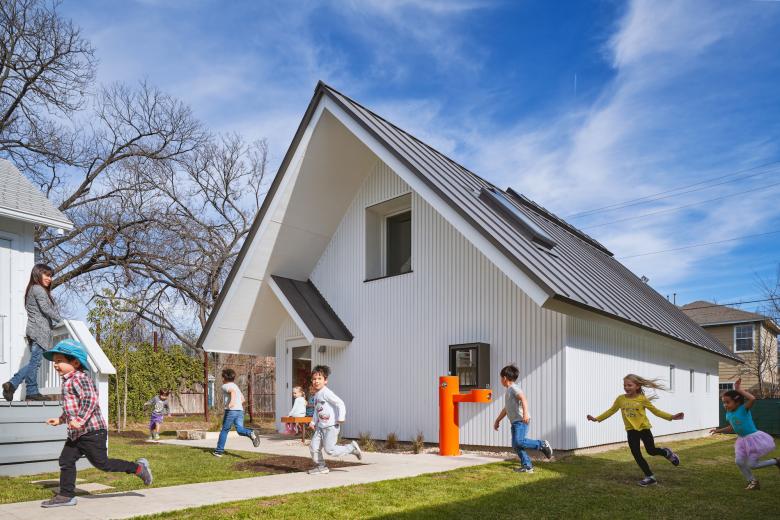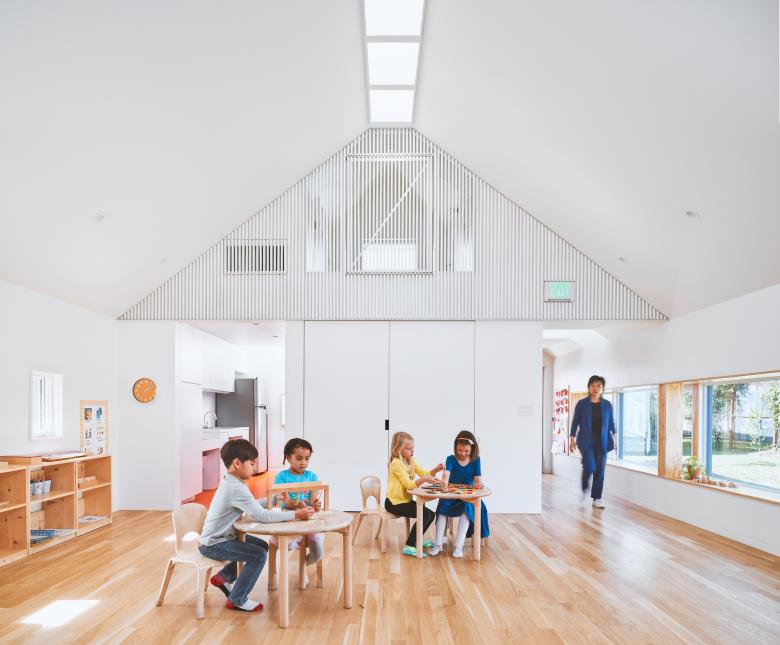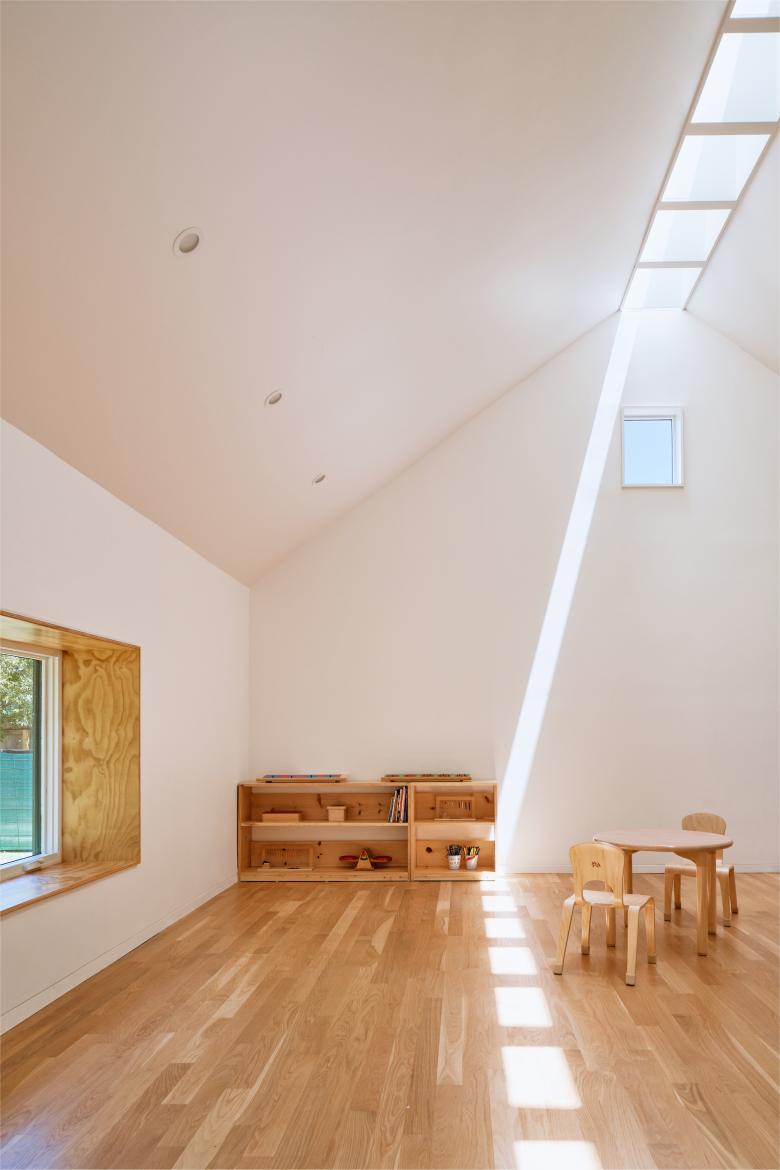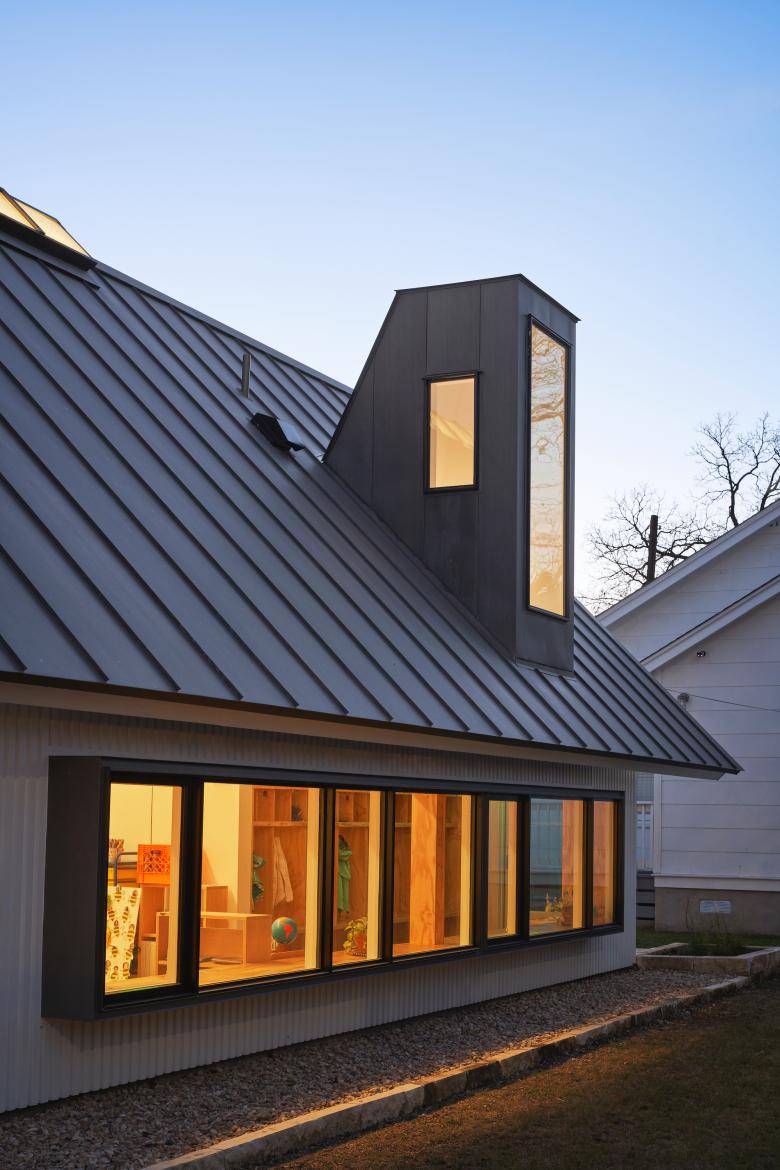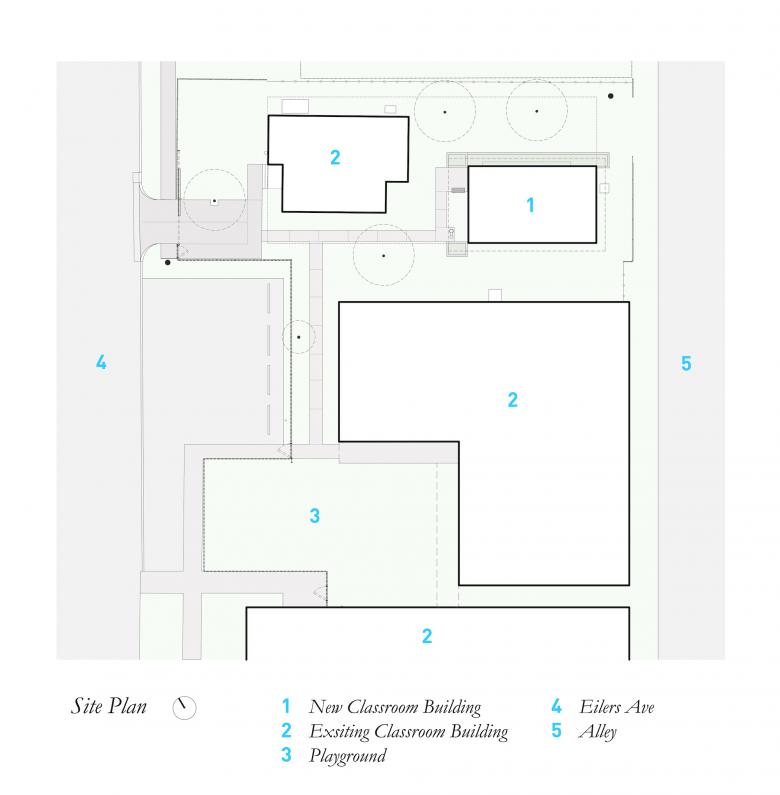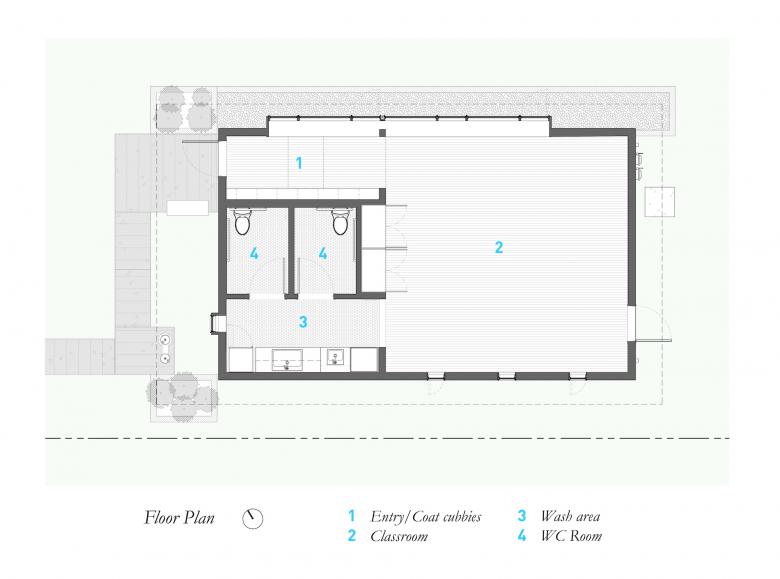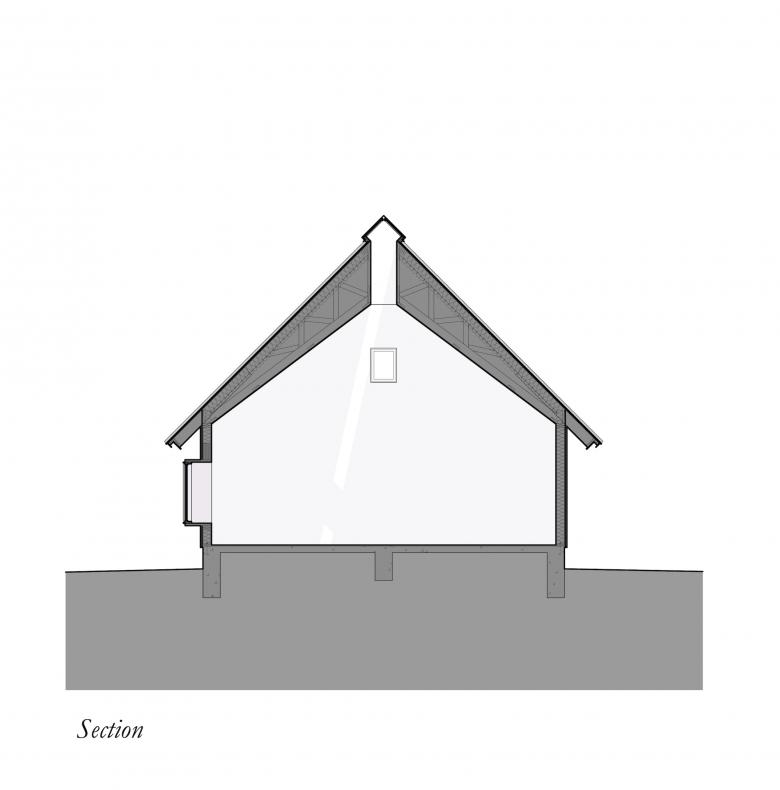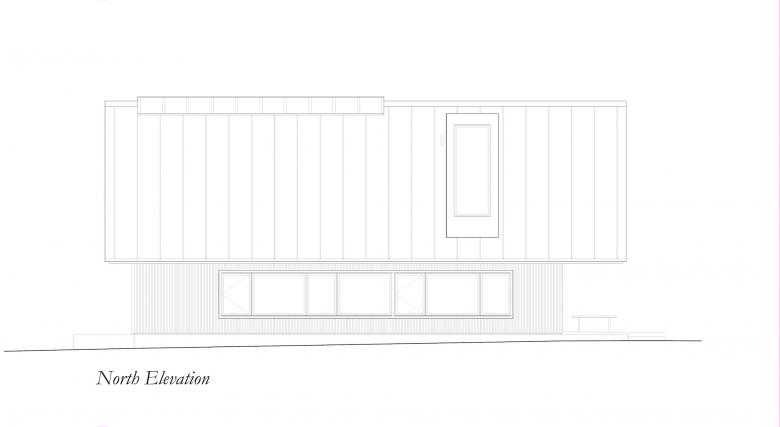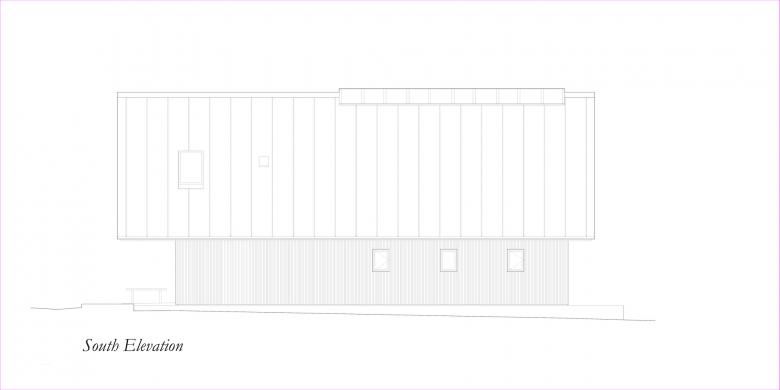US Building of the Week
Little Tiger Chinese Immersion School
A prominent gable roof and small footprint help this new building for Little Tiger blend into its residential Austin, Texas neighborhood. A trio of openings – a ribbon window, a tall dormer, and a ridge skylight – bring plenty of light into the classroom building but also signal it is anything but traditional. Murray Legge Architecture answered a few questions about the project.
Location: Austin, Texas, USA
Client: Mike Osborne and Meggie Chou
Architect: Murray Legge Architecture
- Design Principal: Murray Legge
- Project Manager: Travis Avery
- Project Team: Lincoln Davidson, Benjamin Kaplowitz
MEP/FP Engineer: ATS Engineers
Contractor: Mike Osborne
Civil Engineer: Urban Design Group
Building Area: 735 sf
The owners of the school, Meggie Chou and Mike Osbourne, are both artists in Austin. Mike is a photographer and Meggie an installation artist. Before the creation of Little Tiger, Mike shot commercially for architects, which was how I became initially acquainted with his work and met him. His art often incorporates buildings as a subject matter, and I’ve always been a fan. Over the years we’ve kept in touch. When Mike and Meggie were in a position to expand Little Tiger, they reached out to us.
Little Tiger is a Chinese language immersion school for pre-k, kindergarten, and lower elementary education. It is located in a residential neighborhood in central Austin. After operating at capacity out of a converted residential bungalow and portions of an adjacent church building, the school added a new one-room classroom structure to create a small-scale campus and increase enrollment.
The building itself is inspired by the historic American one-room schoolhouse – with an iconic gable form, rectangular footprint, belfry, and single classroom space. Its size and scale is tailored to the primary occupants, all of whom are under four feet tall. The gable shape has very low eaves that reduce the scale of the building (an adult can touch the roof overhangs easily). All the windows in the classroom are child-height. A long, low window bay along the north wall doubles as a reading nook and built-in bench. The exterior material palette consists of white painted cement board and paint-grip metal, which fits into the neighborhood context and existing campus aesthetic.
The main classroom is a single, vaulted space that accommodates 12-15 students. Abundant daylighting is provided by a continuous skylight along the peak of the roof that tempers the strong Texas sunlight through a series of deep vertical light baffles. During certain times of the year, small patches of sunlight dapple the floor: at all other times the light is diffuse and indirect.
Since the property is zoned residential, the owner wanted the option of reverting the school buildings back to residential use. The new structure was designed with this in mind. With small adjustments, the building could function as an auxiliary dwelling unit; the water closet rooms can combine to create a full bathroom, the kitchenette can convert to efficiency kitchen, and the utility loft would function as a sleeping loft. To minimize the amount of retrofitting, utility connections for possible future uses were installed and capped. In addition, a hookup for a future solar array was provided for the south-facing roof.
The project utilizes provisions in the Austin development code for compatible uses within residentially zoned properties, such as community schools, which creates a more diverse urban fabric within the typical single-family residential neighborhood.
The new building sits behind the existing 1940s bungalow, at the back of the residential lot alongside the adjacent church. Little Tiger activities take place in all three buildings, so it was important to create a sense of community and campus identity with the placement of the new classroom structure. The 735-square-foot structure occupies the back portion of the school’s property and creates a small yard between the existing and new buildings. The compatibility setback prescribed by the development code creates a larger yard to the north, which serves as a larger open area for outdoor activities. A large, low window faces this yard, connecting the class-room to the adjacent green space. The overall result is an eclectic campus of differ-ent building types connected by informal outdoor spaces and sidewalks.
The basic concept changed very little. We started with this idea of creating an over-sized low roof as a kind of sheltering gesture and scale shift. It’s a traditional gable roof but the proportions and overall geometric configuration is not traditional, it’s unexpected and a bit surprising. It's this combination of a traditional plain form and unexpected and surprising final shape that interests us. We also feel that it was a way to relate to the imagination of children. It’s a “house” but not a house. Like a child’s drawing of a house or something from a dream. Familiar but unfamiliar at the same time.
We’re quite interested in working with natural light in our office. There is an abundance of it in Texas and a little goes a long way. Over the years we’ve learned how to shape and control it. Here we used a ridge mounted skylight mounted on top of the roof which is formed through scissor trusses. The scissor trusses are very inexpensive and they yield a very deep section at the peak. This depth acts as a baffle to the light entering the room and helps diffuse the intense Texas sun. We learned this trick from the great Texas architect Max Levy. We’re fans of his work his work and study it often including this scissor truss skylight combination which he’s used before and probably invented. There is a short period of time during the year when a striking dashed line of light enters the building.
Little Tiger uses a restrained palette for exterior and interior finishes. The exterior materials consist of paint-grip metal roofing and white painted cement board siding. Paint-grip has a natural quality that shifts in color and appearance depending on lighting conditions. In a variation on traditional siding, closely spaced vertical cement board battens create finely textured walls that play with light and shadows, transforming a modest, common material into something unexpected and special. The interior finishes are limited to oak flooring, gypsum walls, and construction-grade plywood for cabinets and window trim. The plywood creates an informal and playful feeling to the entry; the warm and wild wood grain, the rounded edges, and child-height features invite sitting and contrast the clean white walls.
Email interview conducted by John Hill.
- Windows: Windsor
- Ridge Skylight: American Skylites
- Skylight: Velux
- Casework: Owens Woodworking
